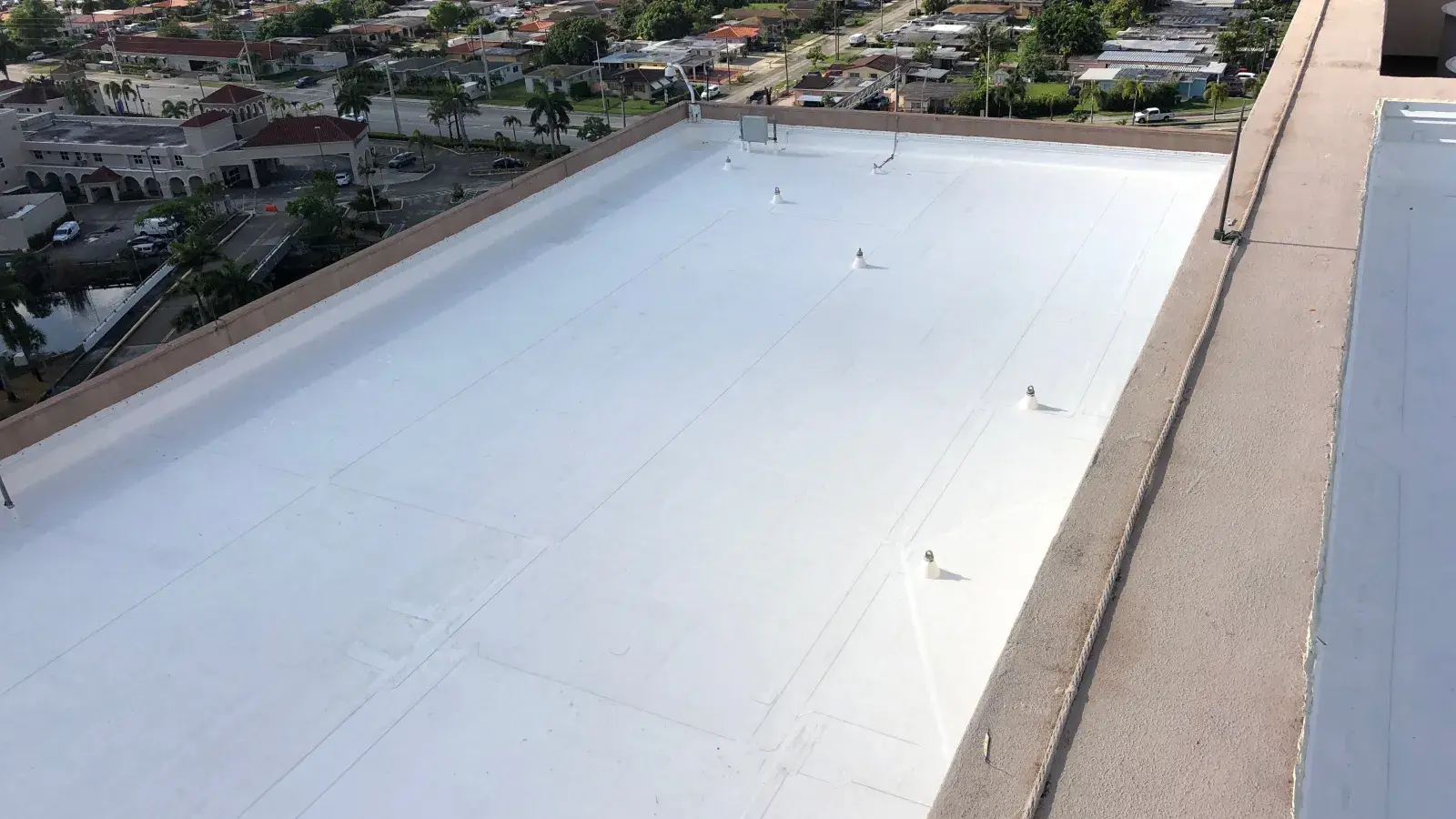Over head protection from the effects of the weather may be the first thought that comes to mind when one thinks of roofing. This protection comes in the form of the familiar steep-slope roof characteristic of residential housing, but the low-slope or “flat” roof assumes prominence in commercial and industrial construction. On these low-slope roofs, single-ply membranes are the common protective layer for weatherproof protection.
Single-ply membranes are generally categorized as either thermoplastic or thermoset. Thermoplastic materials can be repeatedly softened when heated and hardened when cooled. Thermoset materials, meanwhile, solidify, or “set” irreversibly after heating. Single-ply membranes are commonly referred to by their chemical acronyms, such as EPDM or PVC.
Single-ply membranes can be installed fully adhered, mechanically attached, or held in place with ballast such as gravel.
Most low-slope roof membranes are composed of three primary components: weatherproofing layers that keep water from entering the roof assembly; reinforcement that adds strength, puncture resistance, and dimensional stability; and surfacing to protect the weatherproofing and reinforcement from sunlight and weather, with some surfacing properties that provide an additional benefit of increased solar reflectivity.
Re-Roof or Restore?
Time and exposure to the extremes of weathering conditions naturally diminish the performance properties of single-ply membranes, as the protective mil thickness decreases. Before the natural effects of aging compromise the internal physical properties of the membrane, owners and facility managers are faced with the question: Do we re-roof or restore?
Quality roof membranes, when properly installed and maintained, can be restored with coating systems to extend serviceability of the existing roof. Manufacturers produce a number of coating products, including urethanes and acrylics, that when applied to structurally sound single-ply sheet membranes essentially replace the weathered top layer of the roofing polymer, prolonging the roof’s serviceability.
The Roof Exam
A thorough examination of the surface and underlying substrate condition should be conducted to determine if a single-ply membrane is a candidate for a restoration coating. This evaluation at a minimum should include a visual walk-through inspection to look for obvious openings in seams, flashings, and the membrane field in the form of fissures or surface cracks. Random core cuts should be taken to determine if moisture has entered the system, compromising the integrity of the insulation. If this is the case, the compromised area should be cut out and replaced prior to coating installation.
Ideally, preparation of a well-maintained membrane surface is as simple as power washing. A gentle scrubbing with a cleaning agent should be done on hard-to-clean areas, ensuring that no residue remains on the surface to inhibit bonding of the roof coating.






